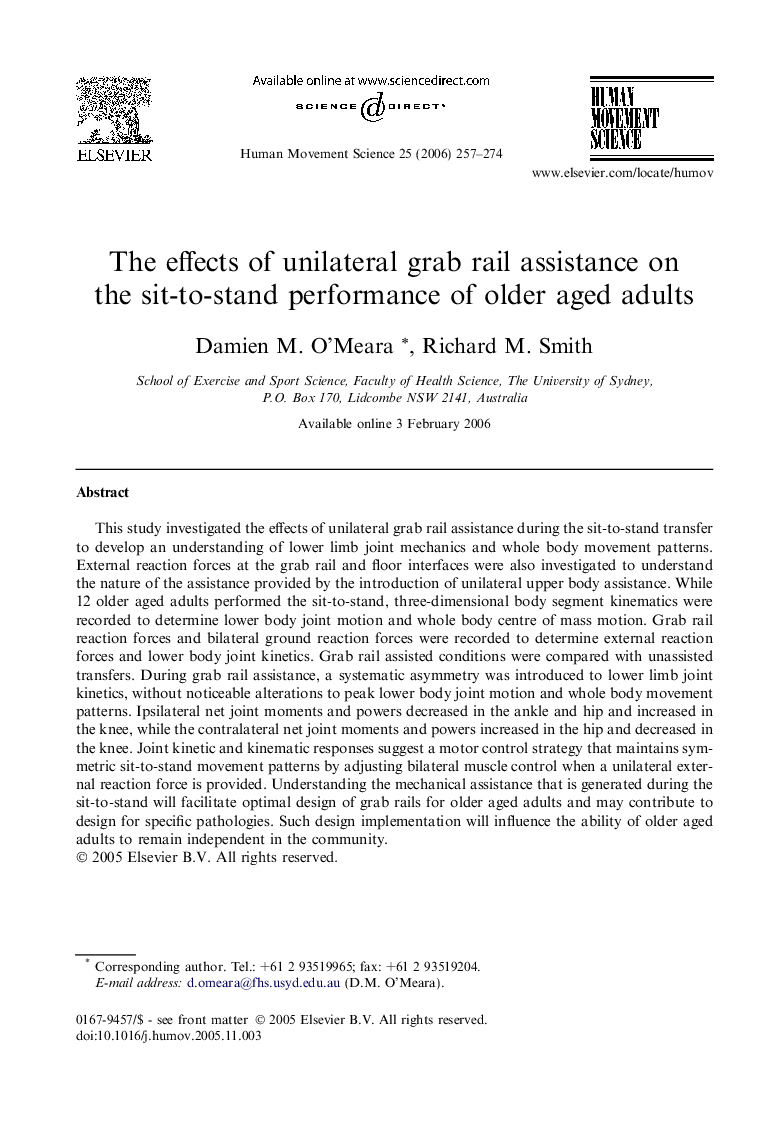| Article ID | Journal | Published Year | Pages | File Type |
|---|---|---|---|---|
| 928955 | Human Movement Science | 2006 | 18 Pages |
This study investigated the effects of unilateral grab rail assistance during the sit-to-stand transfer to develop an understanding of lower limb joint mechanics and whole body movement patterns. External reaction forces at the grab rail and floor interfaces were also investigated to understand the nature of the assistance provided by the introduction of unilateral upper body assistance. While 12 older aged adults performed the sit-to-stand, three-dimensional body segment kinematics were recorded to determine lower body joint motion and whole body centre of mass motion. Grab rail reaction forces and bilateral ground reaction forces were recorded to determine external reaction forces and lower body joint kinetics. Grab rail assisted conditions were compared with unassisted transfers. During grab rail assistance, a systematic asymmetry was introduced to lower limb joint kinetics, without noticeable alterations to peak lower body joint motion and whole body movement patterns. Ipsilateral net joint moments and powers decreased in the ankle and hip and increased in the knee, while the contralateral net joint moments and powers increased in the hip and decreased in the knee. Joint kinetic and kinematic responses suggest a motor control strategy that maintains symmetric sit-to-stand movement patterns by adjusting bilateral muscle control when a unilateral external reaction force is provided. Understanding the mechanical assistance that is generated during the sit-to-stand will facilitate optimal design of grab rails for older aged adults and may contribute to design for specific pathologies. Such design implementation will influence the ability of older aged adults to remain independent in the community.
